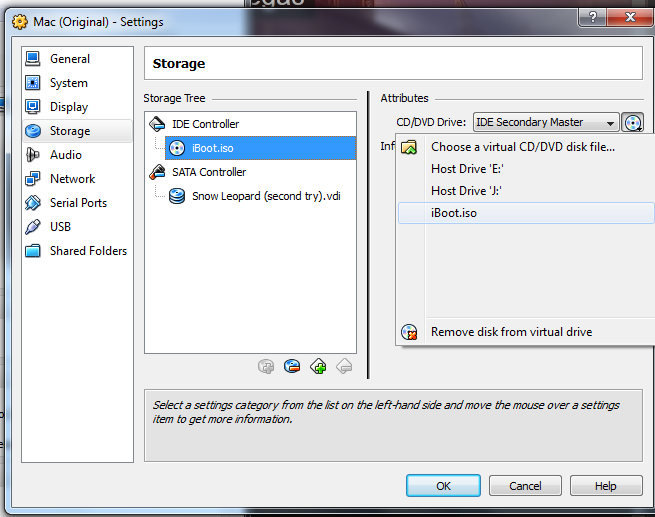Hackintosh Snow Leopard 1067 Iso
SL 10.6.7 on Asrock G31M-S About this guide This is a quick tutorial to get Snow Leopard 10.6.7 working on Asrock G31M-S. As I was in trouble trying to configure this motherboard so I will explain every step as precisely as possible. Additionally, when I started to try installing OSX on PCs, I would have appreciated some beginners tutorials. This is one of them.
Jul 02, 2018 Snow Leopard bootloader, The one of the kind bootloader which all. Do take a look at what Empire EFI as to offer. Unlike other tutorials and guides and solutions, you don’t need a hackint0sh or Macintosh running OSX. Its possible to use this disc on a PC running Windows or Linux. VMware Tools for OS X (darwin.iso) By Niresh. [GUIDE] Snow Leopard 10.6.7 on Asrock G31M-S. By ldiqual, May 25, 2011 in OSx86 10.6 (Snow Leopard) 5 posts in this topic. Akvis software. Recommended Posts.
Some steps may be accomplished with another solution, don't hesitate to contact me if you can improve this thread. For example, maybe USBBusFix is available with Chameleon RC4, so you won't have to disable USB Legacy. As i'm not a native english speaker, don't hesitate to PM me if there are misspellings in this topic. USB Issues The Asrock G31M-S is based on a ICH7 southbridge. According to, the ICH7 southbridge is in conflict with USB Controller, which won't allow you to boot OSX correctly (you'll get a HPET error). To fix it, we will first disable USB Legacy in BIOS Settings.
What does this mean? USB Legacy is used to allow USB HID (Human Interface Device) like a keyboard or a mouse to be emulated as PS/2 devices. With this enabled, you are able to use your keyboard with bootloaders that don't support USB devices (e.g: GRUB, or even boot device selection). As we will initially disable LegacyUSB, you need a real PS/2 keyboard (or a USB keyboard with a USB->PS/2 adapter) to select items on boot steps. After installing the latest Chameleon Bootloader, we will bypass this limitation adding a boot option with Lizard.

What doesn't work For now, I wasn't able to set up the Realtek Audio card. I'll update this thread when it will be done. What you need • A PS/2 Keyboard or a USB Keyboard with USB->PS/2 adapter • A blank recordable DVD • iAtkos v2 s3 (google it), which is a MAC OSX Snow Leopard 10.6.3 patched to work with Intel/AMD processors • Two internal hard disks. One for Windows (this is important), one for MAC OSX. • • (I used a modified 1.80, but I can't find it again:S ) • which allows you to easily modify boot options • (requires registration) which is a post-installation program containing drivers and patches • (requires registration), which is a bootloader that will allow us to bypass the USB Legacy limitation • (not free) which allows you to access HFS+ (journaled) drives Step 1 - Prepare your computer • Connect your PS/2 keyboard • Boot on your Windows Drive. • Burn iAtkos v2 s3 ISO to your blank DVD, using any DVD burner program, like • Extract the modified 1.30 BIOS on your hard disk root (C: ) • Install Macdrive • Restart your computer and press F6 when it's rebooting.
If you don't get a screen like, try rebooting and pressing F2, then go to the Smart section • Follow to flash your BIOS, select the 1.30 modified BIOS. • When it's done, enter your BIOS with F2, and go to Advanced -> USB Configuration.
Disable USB Legacy pressing enter on this item and selecting Disabled with arrow keys. • Save settings pressing F10. This will reboot your computer. Step 2 - Install Snow Leopard • While your computer is rebooting, press F11 to choose a boot drive • Select your DVD drive, and press enter • A boot menu should appear (Chameleon RC4). Press F8, select iAtkos volume, type -v, and press enter. • Several white lines on a black screen will appear, this is normal.
It took me almost five minutes to boot. If you get a line like 'HPET: probeHPET() failed', you must have forgot to disable USB Legacy (see the end of Step 1). • When the installation screen appear, select your language, and click on Next. • Go to Utilities (at the top of the screen) -> Disk Utility. • Select your OSX destination drive, select the Partition tab • Create 2 partitions, one named 'osx' (the first one) with default values, and the other named 'shared' not journaled (if you want to access it from Linux for example) • Apply modifications, and quit Disk Utility.
• Click on Continue, and select 'osx'. Click on 'Customize', uncheck VoodooHDA (sound driver), uncheck the first bootloader, check Chameleon RC5. • Apply settings, and install OSX. Step 3 - Update and configure OSX • When the OSX installation is done, reboot and press F11. Select your Windows Drive. • If you correctly installed Macdrive, you should be able to see 'osx' and 'shared' in 'My computer'.
Go to 'shared' and move every downloaded files from 'What you need' here, except iAtkos, your BIOS, and MacDrive. • Reboot your computer, press F11, select OSX drive • Type boot option '-v', ('-x -v' if it doesn't work) which will boot OSX in verbose (and safe) mode • When you're done with creating an account, install Apple Combo • Restart, F11, '-v' • Install Chameleon RC5, don't reboot. • Launch [url='and select only 'Realtek Gigabit Ethernet' (this is for your network card). Don't reboot. • Launch Lizard, go to the Options tab, select USBBusFix, and click on Save (confirm if Boot.plist isn't found).